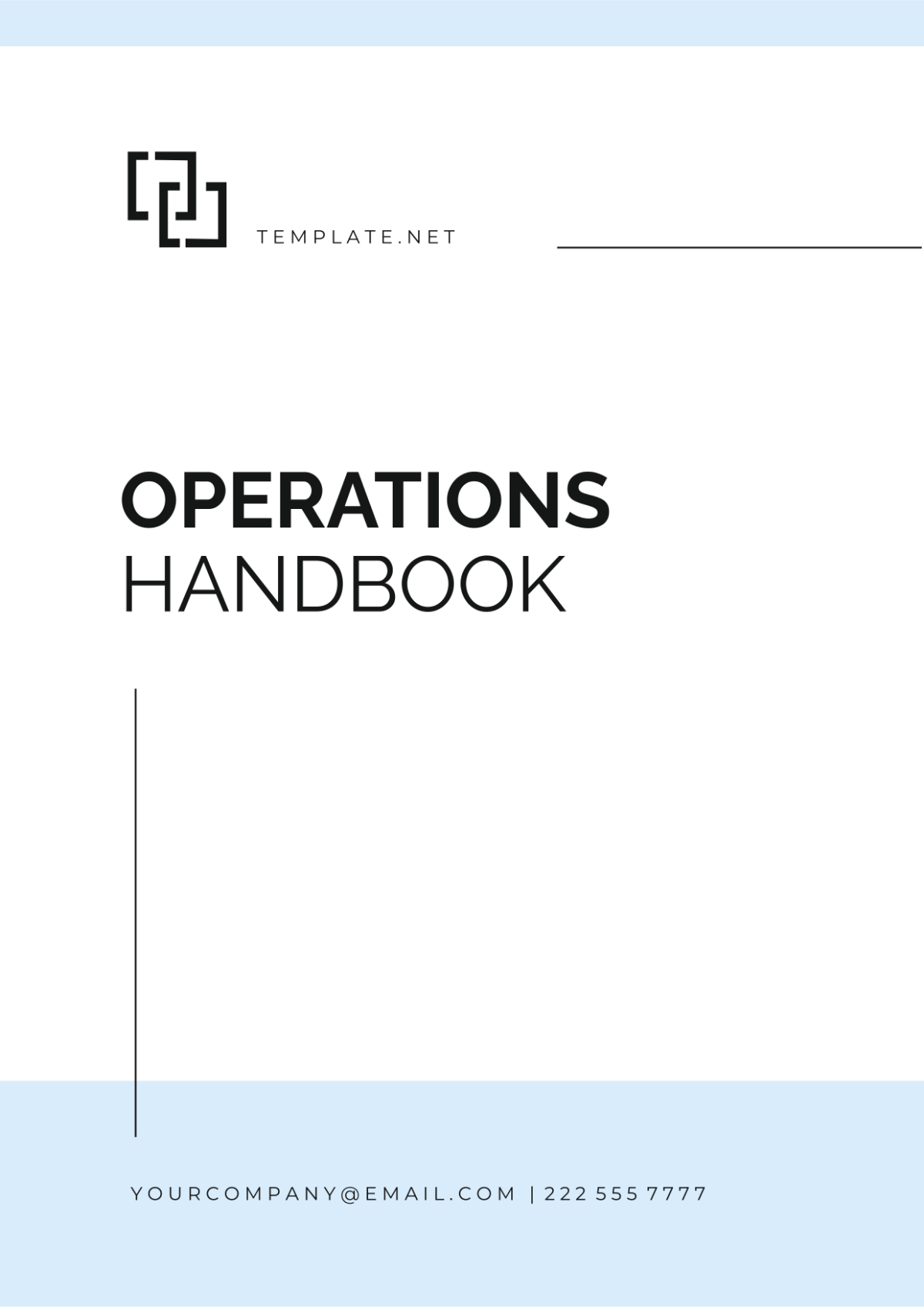Finance Portfolio Management Handbook
Introduction
Purpose of the Handbook
This handbook serves as a comprehensive guide for the Finance Department's portfolio management team. It outlines the principles, strategies, and best practices for effective portfolio management.
Scope
The handbook covers the management of the company's investment portfolios, including stocks, bonds, and alternative investments.
Objectives
The primary objectives of portfolio management are to maximize returns while managing risk and aligning with the company's financial goals.
Organizational Structure
The portfolio management team operates within the Finance Department and reports to the Chief Financial Officer (CFO). The team is divided into sub-teams responsible for different asset classes, each led by a Portfolio Manager.
Roles and Responsibilities
Portfolio Manager: Responsible for overall portfolio strategy and management, including asset allocation and security selection.
Risk Analyst: Conducts risk assessments, stress testing, and risk mitigation strategies.
Research Analyst: Performs fundamental and technical analysis to identify investment opportunities.
Performance Analyst: Monitors portfolio performance and prepares performance reports.
Compliance Officer: Ensures adherence to regulatory requirements and the company's code of ethics.
Investment Strategy
Investment Philosophy
Our investment philosophy is based on a long-term, value-oriented approach, aiming to achieve consistent, risk-adjusted returns. Key principles include:
Value Investing: We seek undervalued assets with growth potential.
Active Management: We actively manage portfolios to capitalize on market opportunities.
Risk Control: We employ risk management techniques to protect capital during market downturns.
Investment Horizon
We consider both short-term and long-term investment horizons, depending on the specific portfolio's objectives. The investment horizons are categorized as follows:
Investment Horizon | Description |
Short-Term | Typically less than one year |
Medium-Term | One to three years |
Long-Term | More than three years |
Diversification
Diversification is a key strategy to spread risk. We maintain a diversified portfolio across asset classes, sectors, and geographic regions. The following table outlines our target asset allocation for a balanced portfolio:
Asset Class | Target Allocation |
Equities | 60% |
Fixed Income | 30% |
Alternatives | 10% |
We periodically review and rebalance the portfolio to ensure it aligns with the target allocation.
Investment Guidelines
To ensure consistency and alignment with our investment philosophy, we have established the following guidelines:
Minimum credit rating for fixed income investments.
Maximum allocation to any single security or asset class.
Restrictions on investing in high-risk or speculative assets.
Investment Decision-Making
The decision-making process for investments involves the following steps:
Research and analysis of potential investments.
Risk assessment and mitigation strategies.
Portfolio construction and asset allocation.
Security selection based on fundamental and technical analysis.
Ongoing monitoring and adjustments as needed.
Our investment committee, consisting of senior portfolio managers and analysts, reviews and approves investment decisions to ensure compliance with our investment guidelines and philosophy.
Risk Management
Risk Assessment
Risk assessment is a fundamental aspect of our portfolio management process. We utilize both qualitative and quantitative methods to identify and assess risks associated with potential investments. Key components of our risk assessment include:
Market Risk
Market risk encompasses the potential for losses due to adverse market movements. To quantify market risk, we use metrics such as beta, Value at Risk (VaR), and stress testing. The table below illustrates the categories of market risk:
Market Risk Category | Description |
Equity Market Risk | Risk related to fluctuations in equity markets |
Interest Rate Risk | Risk associated with changes in interest rates |
Currency Risk | Risk arising from foreign exchange rate fluctuations |
Commodity Price Risk | Risk linked to fluctuations in commodity prices |
Credit Risk
Credit risk refers to the possibility of default by issuers of fixed income securities. We assess credit risk by considering credit ratings, credit spreads, and credit default swaps (CDS). We maintain a minimum required credit rating for fixed income investments.
Liquidity Risk
Liquidity risk is the risk of not being able to sell an asset quickly without significantly impacting its price. We assess liquidity risk by analyzing trading volumes, bid-ask spreads, and market depth.
Risk Mitigation
Once risks are identified, our risk management team employs various strategies to mitigate them:
Diversification
As mentioned in the Investment Strategy section, diversification is a primary risk mitigation technique. By spreading investments across asset classes and sectors, we reduce the impact of adverse events in any single area.
Hedging
We use hedging strategies, such as options and futures, to protect portfolios from market downturns. These strategies are implemented based on our risk assessment.
Active Monitoring
Continuous monitoring of portfolio risk is crucial. We employ risk management software and models to track risk metrics in real-time. If risk thresholds are breached, we take swift corrective actions.
Stress Testing
Regular stress testing is an essential part of our risk management process. We subject portfolios to extreme scenarios to evaluate their resilience. Stress tests include economic downturns, market crashes, and geopolitical crises. Results guide our risk mitigation strategies and asset allocation decisions.
Asset Allocation
Strategic Asset Allocation
Strategic asset allocation sets the long-term target allocation for each asset class. It is based on the portfolio's risk and return objectives. We consider the following factors when determining strategic asset allocation:
Risk Tolerance
Each portfolio is assigned a risk tolerance level based on client preferences and objectives. Risk tolerance influences the allocation to equities, fixed income, and alternatives.
Investment Horizon
The length of the investment horizon, as discussed in the Investment Strategy section, impacts asset allocation. Longer horizons may have higher equity allocations for growth potential.
Economic Outlook
We consider economic forecasts and market conditions when setting strategic allocations. For example, during economic expansions, we may favor equities.
Tactical Asset Allocation
Tactical asset allocation involves short-term adjustments to the portfolio based on market conditions and our outlook. These adjustments are designed to capture short-term opportunities and manage risk. The tactical allocation process includes:
Market Analysis
Our research analysts continuously assess market trends, economic data, and geopolitical events to identify short-term opportunities and risks.
Rebalancing
Tactical shifts are implemented by rebalancing the portfolio to align with our short-term outlook. For example, if we anticipate a market correction, we may reduce equity exposure temporarily.
Risk Control
Tactical changes are subject to risk control measures. We set limits on the magnitude of tactical shifts to ensure they do not deviate significantly from the strategic allocation.
Security Selection
Fundamental Analysis
Fundamental analysis is a cornerstone of our security selection process. It involves a comprehensive evaluation of individual securities to assess their intrinsic value and growth potential. Key aspects of our fundamental analysis include:
Financial Statements
We analyze financial statements, including income statements, balance sheets, and cash flow statements, to understand a company's financial health and profitability.
Valuation Metrics
Valuation metrics such as price-to-earnings (P/E) ratio, price-to-book (P/B) ratio, and dividend yield are used to determine whether a security is overvalued or undervalued.
Industry Analysis
We assess the competitive landscape and industry trends to identify opportunities and risks associated with specific sectors.
Technical Analysis
Technical analysis complements our fundamental analysis by providing insights into market sentiment and timing. Key elements of our technical analysis process include:
Chart Patterns
We examine chart patterns, including support and resistance levels, trendlines, and candlestick patterns, to identify potential entry and exit points.
Momentum Indicators
Momentum indicators such as Relative Strength Index (RSI) and Moving Averages help us gauge the strength and direction of price movements.
Security Selection Criteria
To select securities for inclusion in our portfolios, we consider a set of criteria, as shown in the table below:
Security Selection Criteria | Description |
Strong Financials | Companies with solid financial fundamentals. |
Competitive Advantage | Businesses with a sustainable competitive edge. |
Valuation | Attractive valuations based on key metrics. |
Technical Signals | Favorable technical indicators. |
Risk-Reward Profile | Balancing potential returns with associated risks. |
Portfolio Construction
Once securities meet our selection criteria, we construct portfolios by allocating assets according to the strategic asset allocation defined in Section 4. We consider factors like sector weights and diversification to minimize risk.
Performance Evaluation
Performance Metrics
Measuring portfolio performance is essential to assess the effectiveness of our investment decisions. We use the following key performance metrics:
Return on Investment (ROI)
ROI measures the percentage gain or loss on an investment relative to its initial cost.
Risk-Adjusted Return
We calculate risk-adjusted return metrics such as the Sharpe Ratio and Information Ratio to evaluate how efficiently we generate returns given the level of risk taken.
Portfolio Attribution
Portfolio attribution analysis dissects returns to understand the contribution of asset allocation, security selection, and other factors.
Benchmarking
Benchmarking helps us assess how our portfolios perform relative to market indices and peer groups. We select appropriate benchmarks for each portfolio based on its asset allocation. Regular benchmark comparisons provide insights into our relative performance.
Performance Review
Performance reviews are conducted regularly, and deviations from benchmarks are analyzed. If performance falls short of expectations, we review our investment theses and make necessary adjustments to improve performance.
Continuous Improvement
We emphasize a culture of continuous improvement. Lessons learned from performance evaluations are used to refine our investment processes and strategies.
Reporting and Communication
Reporting Frequency
Effective reporting and communication are essential for transparency and accountability. We provide regular reports to various stakeholders, including clients, management, and internal teams. The frequency of reporting depends on the type of portfolio and client preferences:
Client Reports
For individual and institutional clients, we provide quarterly performance reports. These reports include portfolio performance summaries, asset allocation details, and market commentary.
Management Reports
Monthly reports are shared with the management team to ensure alignment with organizational goals. These reports focus on high-level portfolio performance and strategic adjustments.
Communication
Clear and timely communication is paramount. We maintain open lines of communication with clients and internal stakeholders:
Client Meetings
We schedule periodic meetings with clients to review portfolio performance, discuss investment strategies, and address any concerns or questions.
Internal Meetings
Regular meetings within the portfolio management team and with other departments ensure that everyone is informed and aligned with our strategies.
Performance Attribution
Performance attribution analysis is included in our reports to provide insights into portfolio returns. We attribute performance to factors such as asset allocation, security selection, and market effects. This analysis helps clients understand the drivers of their portfolio's performance.
Customized Reporting
We offer customized reporting options to meet specific client needs. Some clients may require ad-hoc reports or additional details, and we tailor our communication accordingly.
Compliance and Ethics
Regulatory Compliance
We adhere to all relevant financial regulations and laws, ensuring that our investment activities are in full compliance. Our compliance officer monitors changes in regulations and updates our policies and procedures accordingly.
Code of Ethics
We have a robust code of ethics that all team members must adhere to. The code includes the following key principles:
Conflicts of Interest
Team members must avoid conflicts of interest and disclose any potential conflicts promptly.
Insider Trading
Insider trading is strictly prohibited. Team members are educated on insider trading laws and regulations.
Confidentiality
Maintaining client and company confidentiality is of utmost importance. All team members sign confidentiality agreements.
Professionalism
We maintain the highest level of professionalism and integrity in all interactions, both within the team and with clients.
Compliance Training
Regular compliance training sessions are conducted to ensure that all team members are well-versed in compliance requirements and ethical standards.
Reporting Violations
We have established a confidential reporting mechanism for team members to report any violations of our code of ethics or compliance policies. Whistleblower protection is provided to encourage reporting.
Review and Audit
Our compliance policies and procedures are subject to regular review and audit by both internal and external parties to ensure adherence to regulatory requirements and ethical standards.

















































